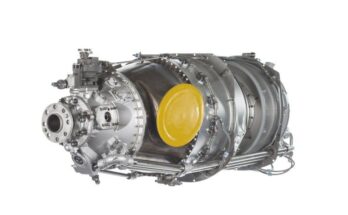Remember 2017, when General Electric did not have a good year? It just had a worse one, but there may be light at the end of the tunnel.
General Electric’s revenues for 2018 were $121.6 billion, up 3 percent from $118.2 billion in 2017. The company posted a loss of $22.4 billion in 2018, compared to a loss of $8.8 billion in 2017.
Over the past few years, the company has been struggling to reshape its portfolios with major acquisitions and divestitures as it concentrates on its industrial manufacturing businesses.
Many of the company’s refocusing efforts revolve around the power industry, which led GE to acquire Alstom’s energy operations in 2015. The $10 billion acquisition – the largest in the company’s history – significantly expanded GE’s power footprint in Europe. However, things have not gone exactly as planned.
Struggles at the power division have continued, and the company now plans to split the operation in two. One unit, GE Gas Power, will focus on gas; the other, GE Power Portfolio, will focus on steam, grid solutions, nuclear energy, and power conversion. Speculation is that GE may hold onto the gas operations and divest the other.
Earlier in the year, GE announced its first big move in portfolio reshaping when it announced it would merge its Transportation unit with Wabtec in an $11 billion deal. The move was part of the company’s strategy – at the time – to focus on three core businesses: power, aviation, and health care. This plan shifted again by mid-2018, when the company announced it would shed its health care and oil-related operations to concentrate on power, aerospace, and renewable energy, mostly wind turbines.
The one bright spot at the company throughout these travails has been GE Aviation. The unit reported that revenue rose 13 percent to $30.6 billion while operating income jumped 20 percent to $6.5 billion in 2018. The stellar performance is due to ongoing strong demand for single-aisle jet liners – a trend that will continue. Overall, new engine production continues apace as both Boeing and Airbus work off their tremendous production backlogs. The desire for more efficient aircraft led to record orders for the Airbus A320neo and the new Boeing 737 MAX. While the order boom has abated, the focus has now shifted to production.
According to Forecast International’s Platinum Forecast System®, Civil Aircraft Forecast, the market for large jet transports and regional commuter aircraft through 2033 and beyond represents what is probably the largest re-equipment cycle that the world has ever seen, with a projected 30,000+ of these airliners valued at $4.9 trillion at prediscounted prices to be built over the next 15 years. GE Aviation’s turbofan share of this market (including its participation in CFM International) is projected at about 40 percent.
This will be led by the new LEAP engine, developed by the GE-Safran joint venture CFM International. The new gas turbine is being offered on the Airbus A320neo family as well as Boeing’s 737 MAX. In addition, the engine has been selected to power the COMAC C919 aircraft under development in China. As of December 2018, CFM was reporting orders and commitments for a total of 17,275 LEAP engines across all three variants.
Another major engine program for GE Aviation is its GEnx family. The first variant, the GEnx-1B, powers Boeing’s 787. With GEnx engines now in service, attention has turned to the lucrative maintenance market. Here, GE formed a joint venture with Evergreen Aviation Technologies Corp in Taiwan to open an overhaul and repair center for GEnx engines. The new facility is currently only able to perform limited work on GEnx engines, but full overhaul capability was expected to be in place by 2019.
Recent speculation swirling around the possible sale of GE Capital Aviation Services (GECAS) has apparently been laid to rest, with CEO Larry Culp emphatically stating, “To be clear, we have no plans to sell GECAS.” GECAS buys a variety of aircraft from various manufacturers and then leases them to airlines. The operation also buys, leases, and finances aircraft engines. With aviation stable thanks to large OEM backlogs at Airbus and Boeing, it appears GE wants to retain a lucrative slice of this market via its financing operations.
It has been a wild few years for one of America’s most storied conglomerates. The changes implemented have been painful and more headwinds are likely in the near term, but 2019 should be a better year for the company than the one that just passed.
A military history enthusiast, Richard began at Forecast International as editor of the World Weapons Weekly newsletter. As the Internet grew in importance as a research tool, he helped design the company's Forecast Intelligence Center and currently coordinates the EMarket Alert newsletters for clients. Richard also manages social media efforts, including two new blogs: Defense & Security Monitor, covering defense systems and international issues, and Flight Plan, which focuses on commercial aviation and space systems. For over 30 years, Richard has authored the Defense & Aerospace Companies, Volume I (North America) and Volume II (International) services. The two books provide detailed data on major aerospace and defense contractors. He also edits the International Contractors service, a database that tracks all the contractors involved in the programs covered in the FI library. More recently he was appointed Manager, Information Services Group (ISG), a new unit that encompasses developing outbound content for both Forecast International and Military Periscope.




